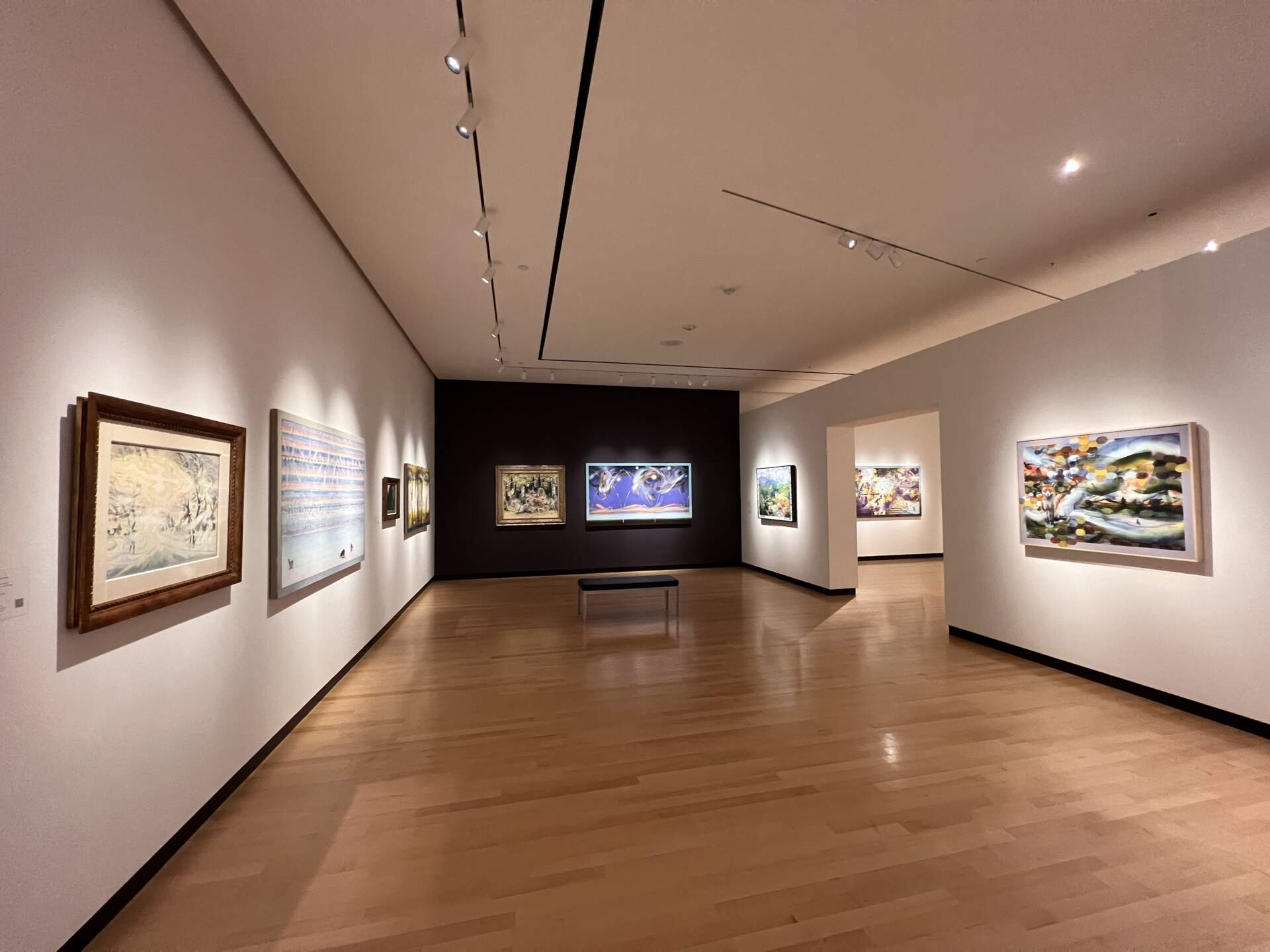
A Grammar of Animacy: Charles E. Burchfield & Mike Glier
Past
Nov 8, 2024 - Mar 2, 2025
This exhibition explores how both American artists infuse observational painting with abstraction to convey a multi-sensory experience of nature. Burchfield died 14 years after Glier was born, so they are generations apart, but both use an abstract visual language, derived from plein air observation, to describe an intimate and reciprocal relationship between the artists and their subject, the living world. They engage the full range of the senses, improvising with color, motif, and repetition to evoke abstract representations of sound, smell, and touch to describe the dynamic, multi-sensory experience of perception. And it is here, in the act of translating the sensory experience that nature provides that the two artists model a kind of reciprocity between artist and subject that reflects a vision of the natural world as partner rather than resource for exploitation.
The exhibition title acknowledges the concept of a “grammar of animacy” created by Robin Wall Kimmerer, a botanist and citizen of the Potawatomi Nation, to describe the linguistic attributes of the Potawatomi language. She noted that 70% of the words in Potawatomi are verbs, compared to English in which the ratio is 30%. There are verbs in Potowatomi for “to be a hill,” “to be red,” and “to be a long sandy stretch of beach,” which is very different from English, a noun-based language, that seems very well suited for a culture of things. Kimmerer described Potowatomi as a “grammar of animacy” since it has few nouns to indicate uniqueness, but endless verbs to describe the ceaseless exchange between all things. Similarly, Burchfield and Glier invent visual, abstract vocabularies to describe intangible but dynamic aspects of landscape like light, air, sound, and temperature as elements in the visual depiction of a volatile, but glorious, living world.
Burchfield was conscious of a living world of shared energy and it was his job to describe life, indivisible. Inspired by this mission, Mike Glier has been studying Burchfield’s work for decades. Studio artists like Burchfield and Glier are never really alone when at work; artists and writers who came before are always at hand, offering advice. In a culture often adrift in alienation, it’s important to acknowledge these intergenerational conversations and to celebrate the passing of knowledge from one to another. In this spirit, A Grammar of Animacy is a chance to enjoy the intentional and serendipitous connections between two artists dedicated to studying and celebrating the natural world.
The exhibition features thematic groupings of works by both artists, accompanied by a conversation between Burchfield Scholar Nancy Weekly and artist Mike Glier. They explore the thematic connections from their perspectives in the exhibition catalog. Art has been curated from private and public collections, including the Burchfield Penney Art Center’s unique collection and archives.
Expanding the ideas and impact around the work of Charles Burchfield is core to the Burchfield Penney Art Center’s mission. We are thankful that support from our founding director, Dr. Edna M. Lindemann, provides us with resources to host a residency for artists to expand their knowledge and understanding of Burchfield. Through this work, we are all enriched.
A Grammar of Animacy: Charles E. Burchfield & Mike Glier is presented through the generous support of the Charles E. Burchfield Foundation. For their meaningful support in memory of Harriet and Mortimer Spiller, we gratefully acknowledge Lora Spiller, Jill Underwood, and Harley Spiller. Additional support comes from The W.L.S. Spencer Foundation, The Cameron and Jane Baird Foundation, Claudia Sloan, the Avis Charitable Fund, and AG Rosen. The support of these sponsors allows us to create exhibitions with publications that enrich our understanding of Burchfield’s art.
We are grateful for the generosity of many anonymous individuals who lent art for the exhibition, and acknowledge the loans from DC Moore Gallery in New York, Downing Yudain in North Stamford, CT, Krakow Witkin Gallery in Boston, the Young Sloan Collection, and Gabriella Ojeda-Badillo and Benjamin Schwartz. Special thanks go to Mike Glier, whose creativity and intellectual curiosity permeate the thought-provoking themes that comprise the exhibition.